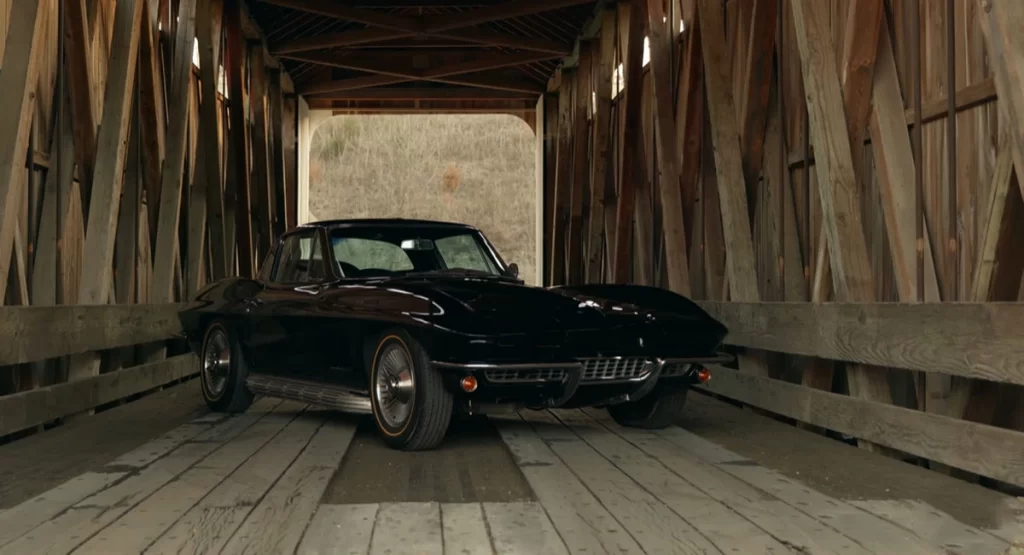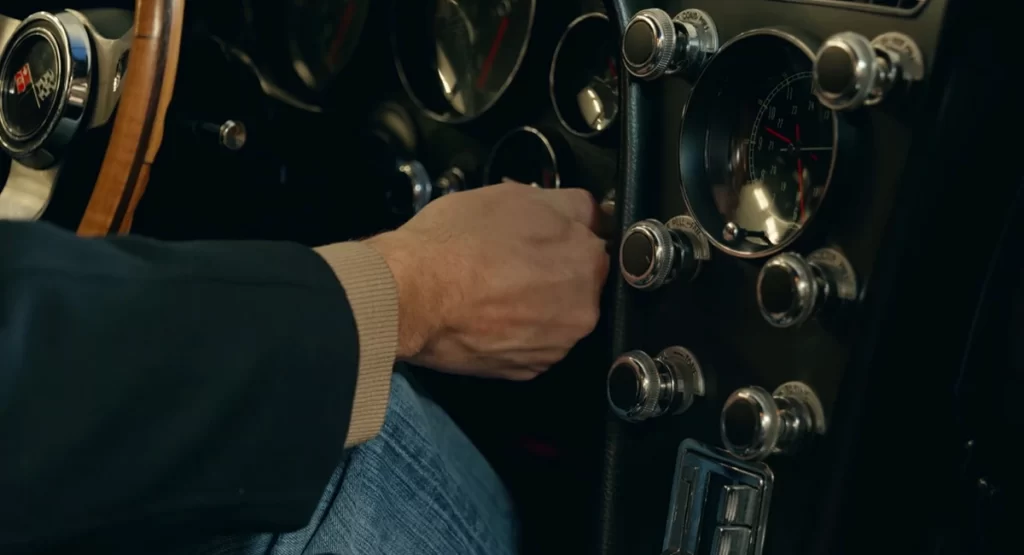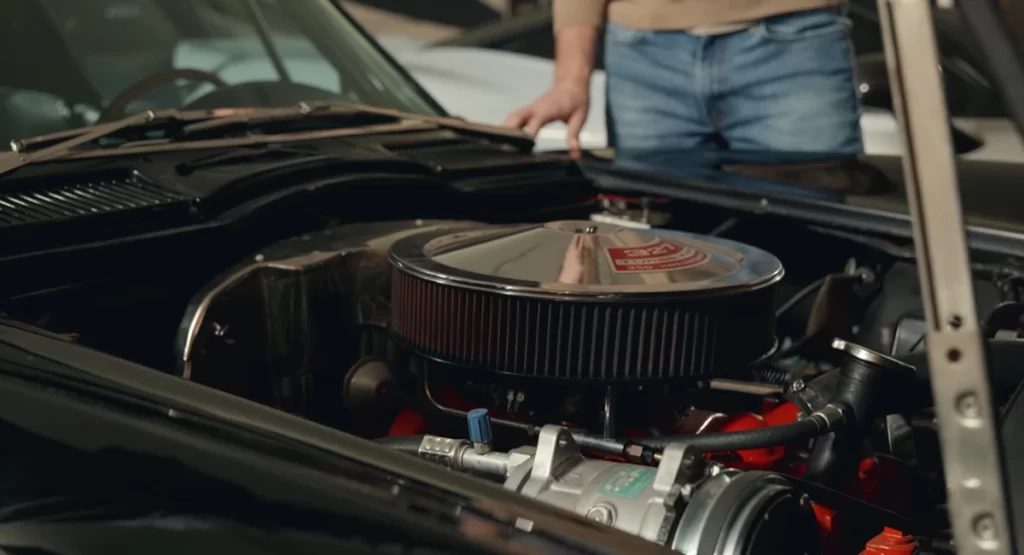The 1965 Corvette Stingray was one of the best models to come out in that decade. It had a perfect-looking body and also came in different colors to select between. It had many good new things, which totally renewed the vehicle market.
Underneath the fiberglass skin, however, was the major news for the 1965 Corvette Stingray. The introduction of conventional four-wheel disc brakes was the first appreciated feature.
The brakes included a four-piston design, two-piece calipers, and rotor cooling fins. Although the pads were always in contact with the rotors, the ensuing drag was minimal and had no impact on fuel efficiency.

Additionally, the mild contact preserved the rotors’ cleanliness and didn’t shorten the pads’ expected lifespans of 57,000 miles for the front brakes and around twice that for the rear binders, both of which were extremely high.
What engines were available in the 1965 Corvette Stingray?
It is almost difficult to contest the appeal of the Sting Ray Corvette. These very potent and loud vehicles, which combine stunning appearance with exhilarating performance, are anything but subtle.
This beautiful Nassau Blue Metallic 1965 327/350HP optioned Roadster is a great example of this famous Chevrolet vehicle by any standard, and it would make a wonderful entry into a Concours d’Elegance or a superb contender for high-speed touring on tours like the Copperstate 1000.
- 327ci OHV V8 Engine.
- Single 4-Barrel Carburetor.
- 350bhp at 6,000 rpm.
- 4-Speed Manual Transmission.
- 4-Wheel Independent Suspension.
- 4-Wheel Disc Brakes.
What is the best speed for the 1965 Corvette Stingray?
125 mph (Est.)
The Corvette wasn’t treated well during the 1970s; by 1978, it had transformed into a plasticky car that existed in both the late 1960s, when it was first produced and the 1980s, which were about to arrive. The standard model test vehicle’s 350-cubic-inch engine produced 185 horsepower, which contributed to the Vette’s 7.8-second sprint to 60 mph.
What year Corvette had the 454 engines?
The LS-5 engine was replaced by the 454 cu in (7.4 L) LS-4 big-block V8 engine in 1973. It produced 275 horsepower (205 kW), and 15% of the cars were ordered with it. The hoods of Corvettes with big-block engines were adorned with “454” emblems.
The Larry Shinoda-designed Mako Shark II served as a model for the Corvette C3. The Mako II was carried out under Bill Mitchell’s supervision and began in early 1964.
The Shinoda/Mitchell car was sent to Chevrolet Styling under David Holls after the mid-engined format was dropped, where Harry Haga’s studio modified it for production on the already-existing Stingray chassis. With the exception of the softer contours, the resulting lower half of the car resembled the Mako II quite a bit.
What year Corvette is the most valuable?
The 1967 Chevy Corvette L88 Coupe, which sold for a staggering $3.85 million at a collectible car auction in Scottsdale in 2014, was the most expensive Corvette ever to be sold at auction. Only 20 L88s were produced by Chevrolet in total, and it is unknown how many of them have endured the test of time.
Throughout the C6’s production run, Chevy offered a variety of special editions on everything from base models to Z06s and Grand Sports, but the 138 ZR1s outfitted with the 60th Anniversary Design Package are the most expensive of all.
Arctic White paint with silver bands over Twilight Blue leather seats with suede accents were included in that package. It is the most expensive production C6 of them all at $71,800 (original MSRP was about $127,000), but even this is a performance bargain.
What is the best year Corvette to own?
The 1953 model was the first to be released, but it wasn’t all that exciting. Although this model had a decent appearance for a sports car, it wasn’t very efficient. A 235-cubic-inch Inline-six engine with only 150 hp was what drove it.

Although it was a long way from the models we see today, it was still a good place to start for the performance and design aspects that would follow.
With its futuristic design influenced by the exterior of the 1984 model, which at the time appeared as though it were from a Star Trek movie set, the 1997 model is regarded as a classic.
Either the coupe or convertible model is an option for you. Chevy gave it plenty of power that year, according to the Corvette Museum, with the 5.7-liter V8 engine, which produces 345 lb-ft of torque and 240 peak horsepower.
What year Corvette came with a big block?
The Mark I W-series truck engine from 1958 to 1963 was replaced in 1965 by the big-block Chevy engine. This was a fantastic high-performance engine and a very good truck engine. The Big-block had a displacement of 396 cubic inches in its first year, increased to 427 in 1966, and then reached 454 in 1970.
What is a big block Corvette engine?
The Corvette’s big-block period lasted just 10 years before it was choked off by the EPA’s strict emissions regulations and a bleak economic climate.
The massive cubic inches under its hood, however, gave the exotic-looking Vette the ability to rule the automotive scene at the time in a way it would never quite replicate, giving classic Corvette fans a golden age of exceptional performance and tire-melting torque.

Some related FAQs about 1965 Corvette Stingray
What year Corvette has 4 wheel disc brakes?
Four-wheel disc brakes became a standard with the 1965 Corvette.
What year Corvette came with side pipes?
Side pipes weren’t added to a production Corvette until 1965, which was around the same time as the big-block V-8 was introduced, despite the fact that they had been seen on Chevy show cars much earlier (see the 1959 XP-87 up top).
What year did Corvette have independent rear suspension?
1963
First Corvette with independent rear suspension: The C2 was the first Corvette to have an independent rear suspension when it was introduced in 1963, the sports car’s tenth year of production. A transverse leaf spring was incorporated into the plan, and for the past 55 years, it has been a part of the Corvette’s suspension system.
What year Corvettes are considered stingrays?
1963
The Chevrolet Corvette Stingray was the name of several model years of Chevrolet Corvettes, including the 1959 and 2009 Corvette Stingray concept cars. Second generation Chevrolet Corvette (C2), also known as the Corvette Sting Ray, was first produced in 1963.
I hope you learned something new from this article and have a better understanding of 1965 Corvette Stingray. If you have any further questions, please leave a comment below and we will respond with more competent solutions. Also, if you have any further questions concerning the Chevy 400ss, take a look at this.
